A coolant temperature sensor is an important part of a car’s cooling system. It helps to ensure that the engine runs at the correct temperature by sending information to the car’s computer. If the engine is running too hot or too cold, the computer can make adjustments to keep it at the correct temperature. In this blog post, we will discuss how a coolant temperature sensor works in detail and what it does for your car!
Key Takeaway
- The coolant sensor measures the temperature of the coolant that circulates around the engine in order to get a current engine temperature and sends this information to the vehicle’s computer.
- If the coolant temperature sensor is bad, the check engine light will be illuminated, the radiator fan will work more to try and cool the engine, and you may experience a decreased fuel economy, rough idle, delayed starting period, or engine overheating.
- Typically, a coolant temperature sensor has a lifespan of 100,000 miles, and replacement costs around $80.
How a Coolant Temperature Sensor Works

The coolant temperature sensor works by measuring the temperature of the coolant in the cooling system of a car. The coolant flows around the engine and absorbs heat and gives an indication to the sensor of how much heat the engine is giving off. By constantly monitoring the coolant temperature, the coolant temperature sensor is able to send accurate readings of the current engine temperature to the vehicle’s computer.
The coolant sensor works by measuring the temperature of the coolant and sending that information back to the vehicle’s computer so that the vehicle’s computer can make adjustments in the fuel injection, and ignition timing, and to either turn on or turn off the cooling fans.
The coolant temperature sensor operates using electrical resistance to measure the temperature of the coolant. The coolant temperature sensor is a resistor (thermistor) that varies the voltage output as the temperature changes its operation. When the temperature of the coolant increases, the coolant temperature sensor resistance decreases. When the coolant temperature decreases, the resistance of the sensor increases.
With the readings from the coolant temperature sensor, the ECU monitors the temperature change of the engine and adjusts the fuel injection, ignition timing, and controls when the electric cooling fan is switched on and off. This reading is also used to send an accurate reading of the engine temperature to the temperature gauge on the dashboard.
Without a properly functioning coolant temperature sensor, the engine will start to rough idle due to improper fuel injection and ignition timing. The engine may also overheat because a faulty CTS will not turn on the cooling fans.
How To Tell If Your Coolant Temperature Sensor is Bad

The purpose of the engine coolant temperature sensor is to measure the temperature of the coolant for the control module. This information is then used to adjust the fuel injection parameters and to activate the cooling fans when needed. Having such an important role, it is key to know when the coolant temperature sensor is going bad.
The most common symptoms of a bad coolant temperature sensor include a check engine light on the dashboard, radiator fans working intermittently or continuously even if the engine is cold, decreased fuel economy due to bad ignition timing, engine overheating, delayed engine starting period, or rough idle.
1. The check engine light is on
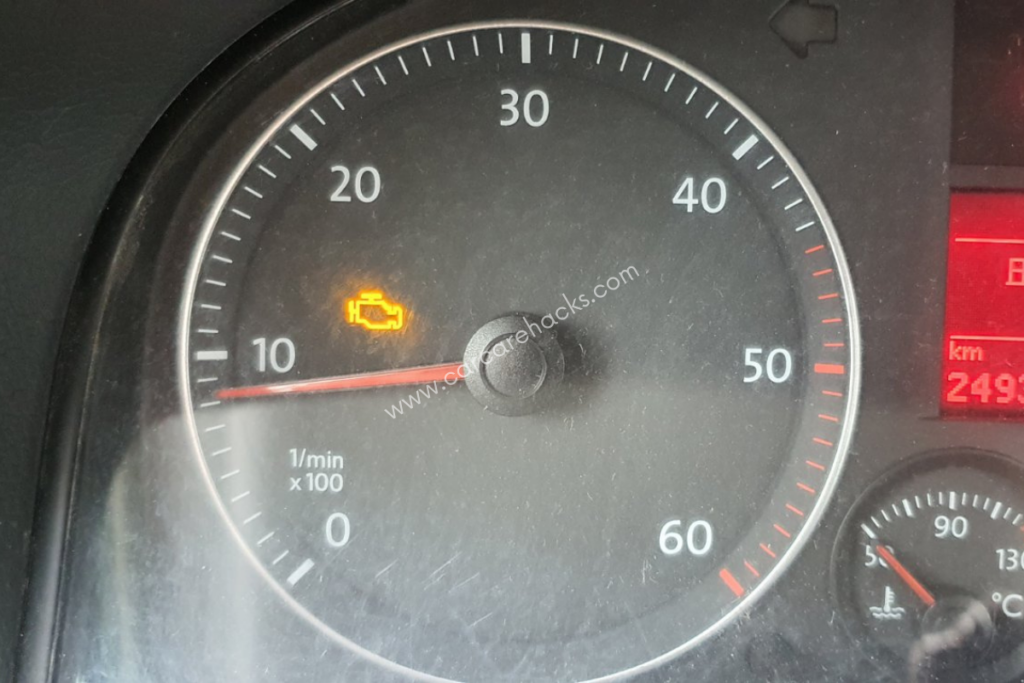
A faulty coolant temperature sensor is often one of the reasons your check engine light will be on. This vital part of the car’s computer system monitors how much heat the engine produces. Then it reports it back to the vehicle’s computer.
Then the ECU alerts drivers if the engine is overheating, commonly signaling a problem with the cooling systems. Driving with this warning light continuously illuminated can cause further damage to other integral components. This can lead to catastrophic failures.
When the coolant temperature sensor fails, it will send a bunch of faulty data to the vehicle’s computer. The vehicle’s computer will notice discrepancies in the readings and will trigger the check engine light to alert the car owner that something is wrong. A check engine light can mean that a lot of things have gone wrong. This is why it is important to scan the vehicle with an OBD2 scanner to exactly know what triggered the check engine light.
The OBD2 trouble codes associated with a faulty coolant temperature sensor include:

- P0115 Engine Coolant Temperature Sensor Circuit Malfunction (More details here)
- P011A Engine Coolant Temperature Sensor 1/2 Correlation
- P0117 Engine Coolant Temperature (ECT) Circuit Low Input
- P0118 Engine Coolant Temperature Sensor Circuit High Input (More details here)
- P0119 Engine Coolant Temperature Circuit Intermittent
- P00B4 Radiator Coolant Temperature Sensor Circuit High
- P2183 Engine Coolant Temperature (ECT) Sensor 2 Circuit Range/Performance
2. Radiator fan working intermittently or continuously even if the engine is cold
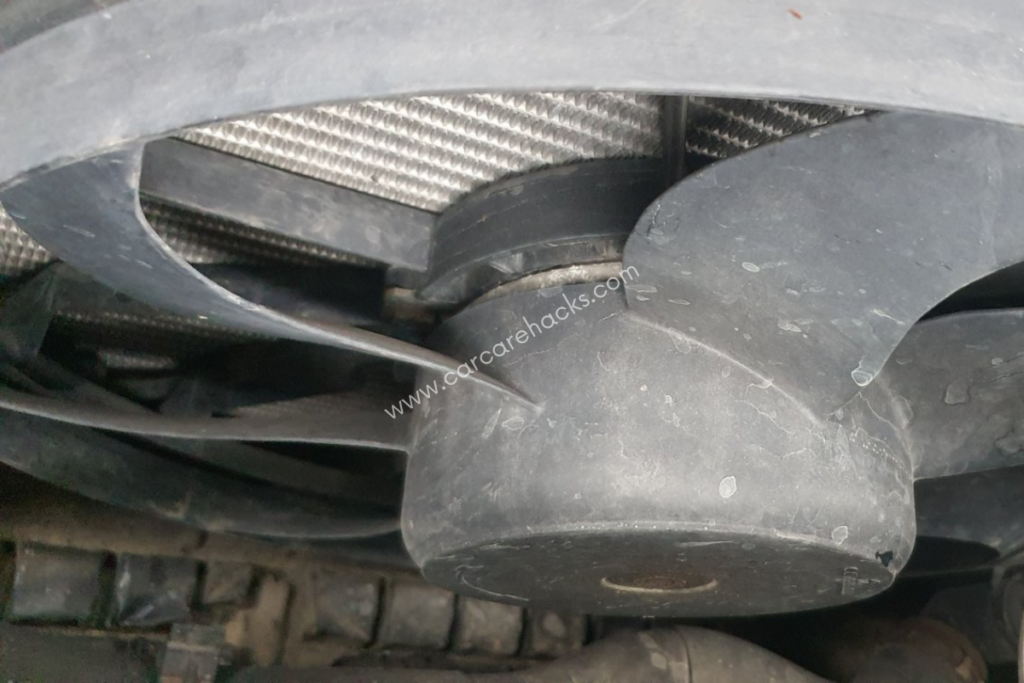
Most drivers know that the radiator fan running intermittently or constantly is not a good sign, and it could be a warning of a more serious issue. A radiator fan should be engaged when the engine temperature is high, not when it is cold.
One possible culprit for this behavior is a faulty coolant temperature sensor. Without a properly functioning sensor, your engine may struggle to maintain an optimal temperature. This is because a faulty coolant temperature sensor will send out wrong readings and will trigger the radiator fan, even when the engine is cold. This will contribute to only lowering the temperature of the engine even further.
It is highly advisable to get your car checked as soon as possible so that any potential problems can be corrected before they cause any major damage to your engine.
3. Decreased fuel economy
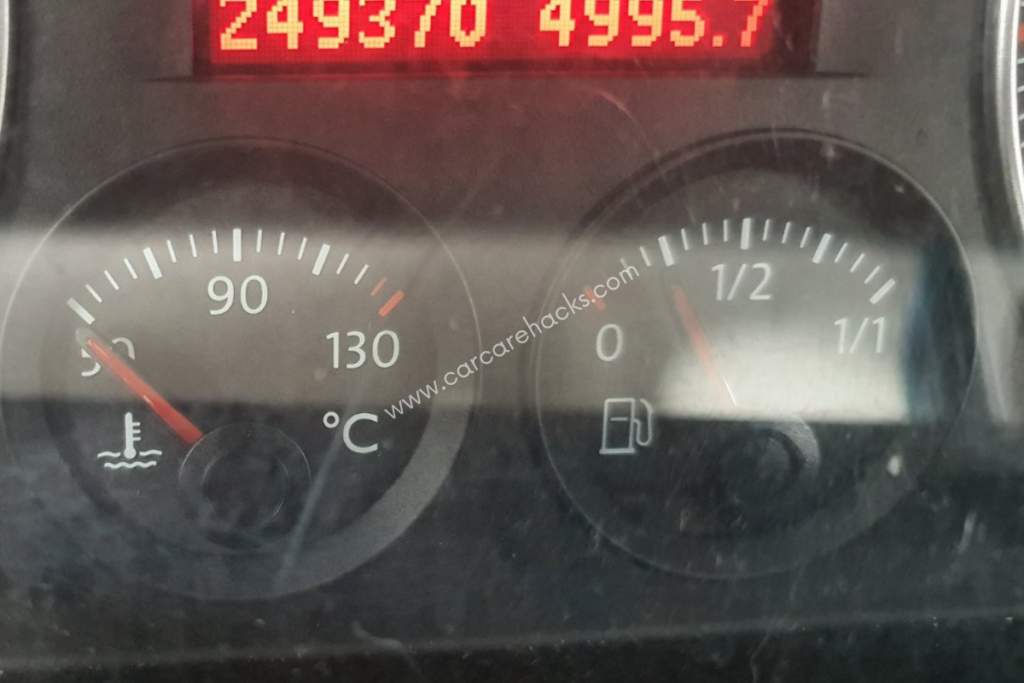
The coolant temperature sensor reads the temperature of the engine and sends it back to the vehicle’s computer. With this information, the vehicle’s computer adjusts the fuel injector and timing ignition. When the coolant temperature sensor fails, the vehicle’s computer starts getting the wrong readings. This alters the fuel parameters to a rich condition where more fuel is being injected when in reality, less is needed.
When the vehicle is running rich, more fuel is sprayed into the combustion chamber. This means that the extra fuel being sprayed in the combustion chamber doesn’t get burnt. In order for a proper combustion cycle to occur, there should be a pre-calculated amount of air, spark, and fuel in the combustion chamber. However, with the wrong data from the faulty coolant temperature sensor, there is more fuel.
This is why the unburnt or halfway burnt fuel goes out of the combustion chamber and manifests with black smoke from the tailpipe or an unpleasant fuel smell.
If a faulty coolant temperature sensor goes undetected, it could mean a driver spends much more money than they need to on gasoline due to continually decreased fuel economy.
4. Engine overheating

A faulty coolant temperature sensor can be a costly mistake and should not be overlooked. Without the necessary feedback about the engine temperature, your engine’s computer will not know when to initiate the proper cooling cycles, leaving your engine vulnerable to overheating.
Despite its small size, the coolant temperature sensor plays an incredibly important role and is vital to maintaining accurate engine temperatures. As the coolant circulates around the engine and absorbs the temperature, the coolant temperature sensor picks up the temperature changes from the coolant and sends it back to the onboard computer.
With the information from the coolant temperature sensor, the vehicle’s computer knows how hot the engine is. Furthermore, the vehicle’s computer uses this information to adjust the ignition timing, order more or less fuel from the injectors, and turn on the radiator fans or turn them off.
5. Delayed engine starting period

A faulty coolant temperature sensor can cause a starting period delay in an engine. This is because the sensor is responsible for measuring temperatures in the engine, giving information about fuel injection, and ignition timing.
When the coolant temperature sensor is faulty, it will send false information to the vehicle’s computer. From there, with the false information, the vehicle’s computer will have trouble determining the right amount of fuel needed to be sprayed into the combustion chamber, as well as how to adjust the ignition timing.
In other words, when the coolant temperature sensor is faulty, the engine will receive faulty information and will order an improper amount of fuel combined with improper ignition timing which will result in a delayed engine starting period.
6. Rough idle

A faulty coolant temperature sensor can be the cause of a rough idling engine. By not providing accurate information about the temperature of the vehicle’s engine, a malfunctioning sensor can cause confusion in the computer system which helps control your engine’s performance.
Rough idling is often a symptom of this problem, as the computer will adjust to incorrect information and make adjustments in fuel delivery that can lead to an uneven running engine.
Identifying this issue typically requires some troubleshooting to pinpoint the exact cause, but having a faulty coolant temperature sensor should be one of the first things you consider if you notice signs such as an unsteady idle and a check engine light on your dashboard.
How To Reset The Coolant Temperature Sensor
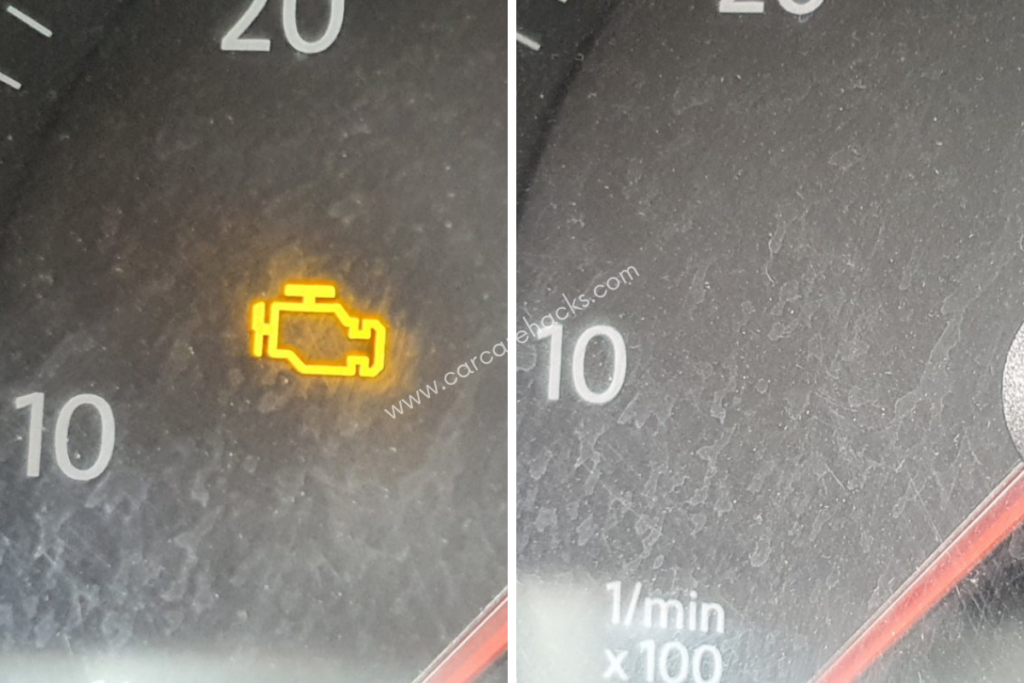
If you have done any work on your coolant temperature sensor such as cleaning it or replacing it, you will need to reset the coolant temperature sensor and ease the check engine light. Here is how to reset the coolant temperature sensor:
1. Required tools
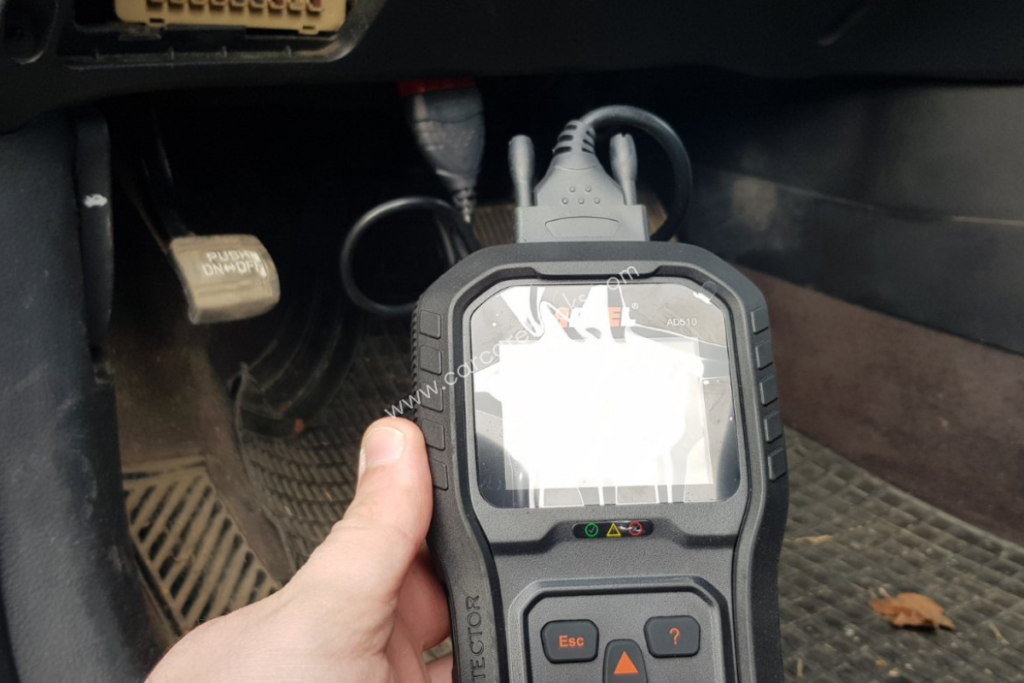
To reset the coolant temperature sensor and ease the check engine light, you will need an OBD2 scanner. Now, when someone mentions an OBD2 scanner with trouble code erasing capabilities, most car owners think that it needs to be a high-end scanner. No. You can get a perfectly fine working OBD2 scanner that will reset your coolant temperature sensor and ease the check engine light for about $100. Check out some of the OBD2 scanners on amazon.com.
2. Connect the OBD2 scanner to your vehicle
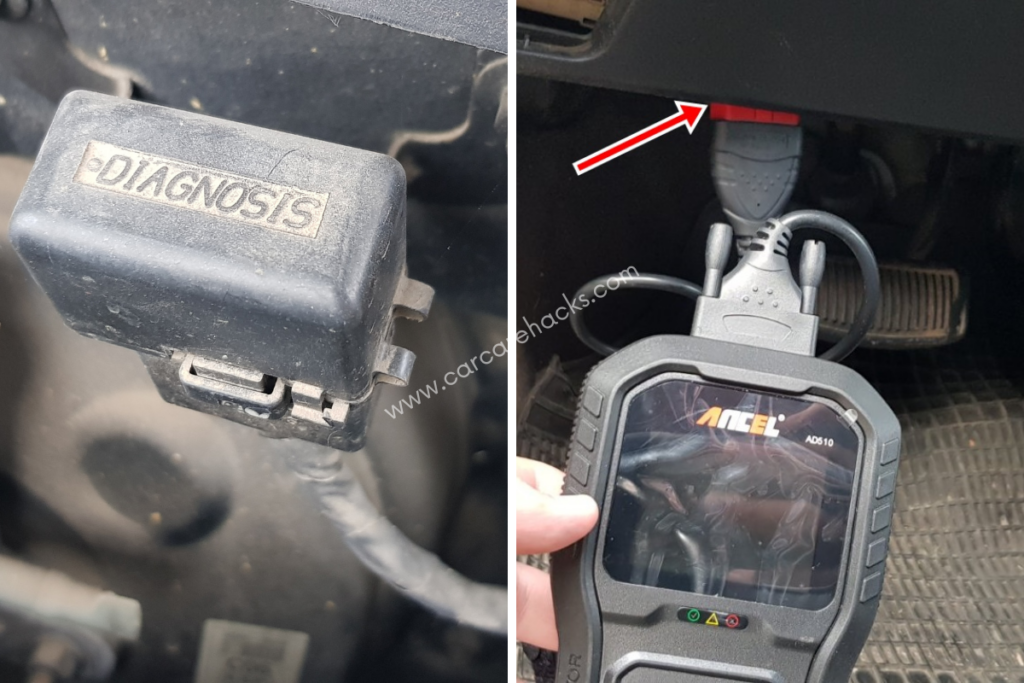
Each vehicle has an OBD2 scanner port which is located either under the steering wheel or in the engine compartment. The scanning port in the engine compartment has a plastic cover with clips that are easily removable. However, the scanning port underneath the steering wheel is often hidden between a large plastic cover that may also house some of the fuses. Remove the plastic cover to gain access to the port and connect your OBD2 scanner.
3. Scan the vehicle for faulty CTS codes
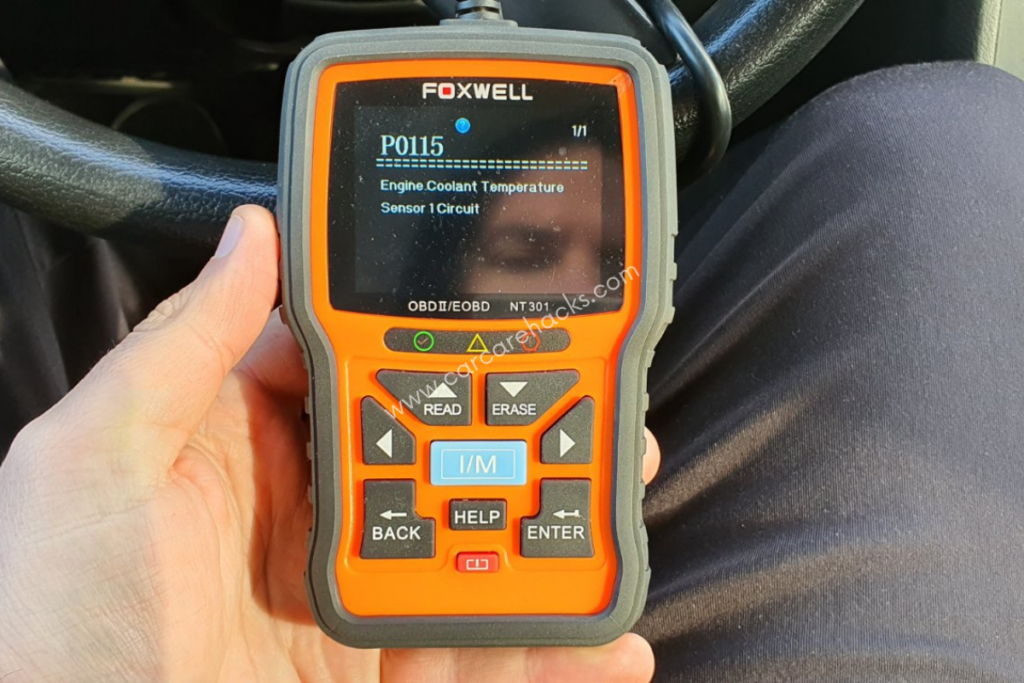
If you wish to reset the coolant temperature sensor and ease the check engine light, you will first have to scan your vehicle for any trouble codes. This will allow the OBD2 scanner to pick up those trouble codes and show them to you on its screen. Once you see the trouble codes associated with a faulty coolant temperature sensor, move on to the next step.
4. Delete the trouble codes using the scanner

Each scanner has a different button layout and options. However, all of the OBD2 scanners have a READ and ERASE button. The purpose of the buttons is self-explanatory. Open up one trouble code at a time and click erase. I said one code at a time because a faulty coolant temperature sensor can throw more than one code.
5. Start the engine and keep it running for fifteen minutes
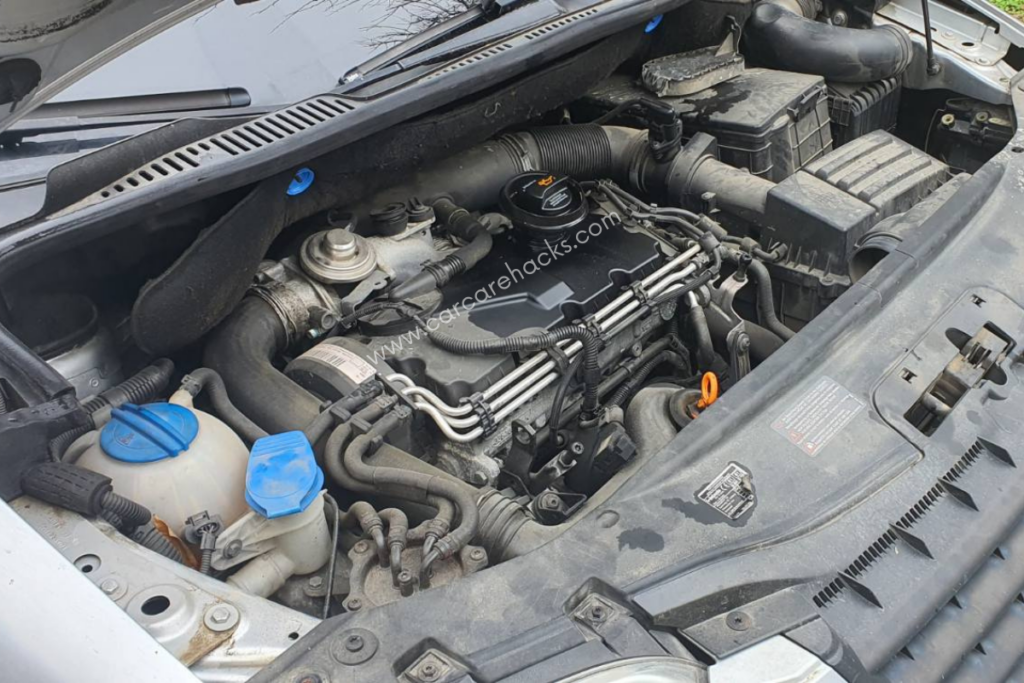
Once the codes have been erased, start the vehicle and keep it running for about fifteen minutes. The idea behind this is to allow the engine to reach the optimal temperature. The coolant temperature sensor is going to pick up the changes in the temperatures and will either report them correctly or will throw another check engine light. If you have done a good job at cleaning or replacing the coolant temperature sensor, you shouldn’t see any trouble codes which means that the coolant temperature sensor has been reset correctly.
What Sensor Controls The Radiator Fan?
The sensor that controls the radiator fan is an engine coolant temperature (ECT) sensor. Located inside the engine compartment, near the radiator, this sensor monitors the temperature of the vehicle’s engine coolant. It then sends signals to the car’s onboard computer system and activates the radiator fan when needed.
This is essential for keeping a suitable operating temperature, which enables the engine to work efficiently without overheating. The ECT sensor also helps ensure fuel economy, emission levels, and performance are all maintained at desirable levels while avoiding potentially costly breakdowns caused by increased heat in essential parts of a car’s inner workings.
How Long Does a Coolant Temperature Sensor Last?
A coolant temperature sensor plays an important role in a vehicle’s engine performance and efficiency. It helps to keep the engine running optimally by measuring the temperature of the coolant and signaling the computer when to turn on the radiator fan.
An average coolant temperature sensor is designed to last for up to eight years or 100,000 miles, but this will depend on how well the sensor is maintained and the type of climate it is exposed to.
Replacing a coolant temperature sensor can be costly depending on the specific car and parts used. For many cars, the cost of the part itself can be anywhere from $25 up to $100 for higher-end brands. Additionally, labor costs may vary depending on where you get the repair done but will be somewhere in the range of $50 to $100.
Replacing a coolant temperature sensor is an integral part of general auto maintenance, as it helps control cooling systems within engines as well as maintain overall engine performance.
